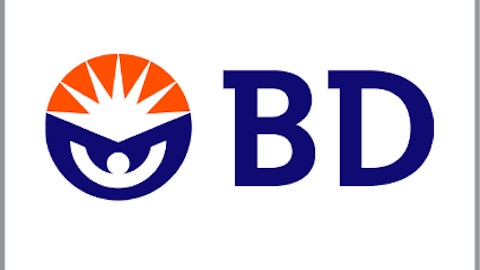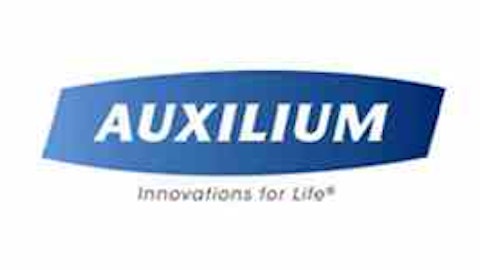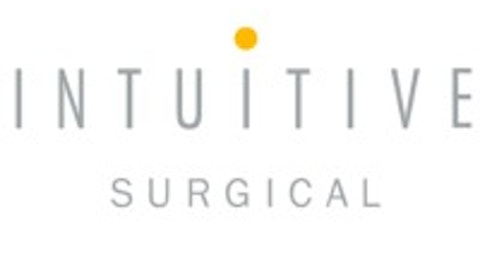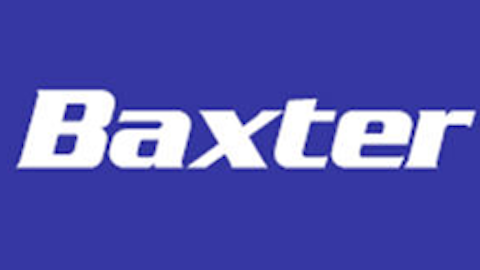Editor’s Note: A previous version of this article referred to rHuPH20 as Hylenex.
Halozyme Therapeutics, Inc. (NASDAQ:HALO) moved higher by 25% on Friday behind the news of a positive opinion by the European Medicines Agency’s Committee for Medicinal Products for Human Use (CHMP) on Roche’s Herceptin SC for European approval. This almost certainly signals an EU approval for Herceptin SC, and this is tremendous news for Halozyme.
What is the news?
Herceptin is one of Roche’s most significant blockbuster drugs, a breast cancer product for patients who express the antigen HER3. It is the best-selling breast cancer drug in the world, but is a real pain to administer.
In the past, Herceptin was administered via IV infusion. A patient has to be at the hospital, and is then connected to a drip for 90 minutes with their first dose. Afterwards, subsequent doses use the same method but at 30 minutes per treatment; still at the hospital.

Why does it matter?
If you were forced to take a life-saving drug, what would you prefer, a drug where you have to visit a hospital with an IV, or an injection that can be taken at home? Unless you are particularly fond of hospitals, most reasonable people would prefer the convenience of their own home.
With this considered, it is easy to understand why Halozyme Therapeutics, Inc. (NASDAQ:HALO) traded higher by 25% on Friday. This could be enormous, as most patients will prefer the quicker treatment option. Roche is now seeking FDA approval, and the EU recommendation is a healthy sign that the FDA will follow.
In terms of upside, Halozyme Therapeutics, Inc. (NASDAQ:HALO) will receive a “mid-single digit royalty” on sales. With $7 billion in sales, Herceptin is not a drug that’s going to grow 30% year-over-year, but should transition from IV to injection.
Theoretically, let’s say that 20% of Herceptin is injected 16 months post-launch. Then, I have little doubt that because of its convenience and patient preference, we’ll see no problem with Herceptin being 80% injected within the next seven years. However, I must note that there is no data to confirm these numbers, but rather my expectation by understanding that it is far more convenient for patients.
If we use a 5% royalty rate (could be 6%) on $5.6 billion (80% of total sales), than Halozyme Therapeutics, Inc. (NASDAQ:HALO) could reach peak sales of nearly $300 million. Keep in mind, this assumes eight of every 10 patients and zero growth for Herceptin. However, I can’t seem to think of anyone who would prefer the IV treatment, meaning I think that injections could become the new Herceptin.
Lastly, Roche itself produced total sales of more than $50 billion last year, meaning that Herceptin is 14% of its revenue. This is quite high for a company that has 40 marketed drugs, meaning that Herceptin is very important to maintaining Roche’s $210 billion market capitalization. One of the ways that Roche can accomplish this feat is by changing the drug’s delivery, as it can extend its patents, which is one reason that I think the new Herceptin SC will be widely used.
It doesn’t end there
After Halozyme Therapeutics, Inc. (NASDAQ:HALO)’s 25% gain, the stock is now trading around an $850 million market cap, or three times my presumed peak sales target. With just Herceptin, Halozyme seems undervalued on a comparative basis (most biotechs trade at five times peak sales), but we must also account for other partnerships that Halozyme has in the works.
Roche and Halozyme Therapeutics, Inc. (NASDAQ:HALO) have partnerships on other drugs that have extended deliveries, including the $4 billion per year lymphoma drug Mabthera. Roche plans to seek EU approval for Mabthera later this year; FDA would follow.
Then, there is a collaboration with Baxter International Inc. (NYSE:BAX). Baxter is developing a drug called HyQvia, which treats an immune deficiency. This potential indication is enormous, with 250,000 patients in the U.S. alone and peak sales in excess of $1.5 billion.
Baxter is a $38 billion company with annual sales of $14.25 billion. Currently, the company is seeing very little growth, but has a promising pipeline including HyQvia.
HyQvia is on pace to launch in the EU and is one safety study shy from an FDA approval. For Baxter, the development and success of HyQvia should prove invaluable to its long-term performance. It is a drug that could increase Baxter’s total sales by more than 10%, which would add significant value to a company that trades at 2.6 times sales.
What is the upside?
Combined, with these three products alone, we’re talking about $12.5 billion in peak total revenue; and this does not include a partnership with Pfizer that could total $507 million. If we use the same 5% royalty rate, and 80% of products using the technology, than Halozyme Therapeutics, Inc. (NASDAQ:HALO) could earn $500 million on the development of its late-stage pipeline.
If we use the same five times peak sales ratio, which is the industry average, than Halozyme Therapeutics, Inc. (NASDAQ:HALO) could have upside of at least 170%. In terms of risks, there is always a chance that its technology will be a commercial flop; although I would be highly surprised due to its benefit for patients.
Thus, I do believe that Halozyme Therapeutics, Inc. (NASDAQ:HALO) is presenting a great deal of upside. Moreover, it is an attractive acquisition target. Roche is the world leader in vaccines, and may find Halozyme’s technology beneficial long-term to its current product offerings.
Baxter might even find Halozyme Therapeutics, Inc. (NASDAQ:HALO) attractive. Last year, Baxter spent $1.2 billion on R&D and has expanded its pipeline abruptly. Therefore, with Baxter being a leader in hospital-based IV treatments, I think it could be a viable option as a potential acquirer.
In other words, there are several options for this company, all of which I think will produce gains for investors.
Sherrie Stone has no position in any stocks mentioned. The Motley Fool has no position in any of the stocks mentioned.
The article Is This Delivery-Focused Biotech a Buy? originally appeared on Fool.com.
Copyright © 1995 – 2013 The Motley Fool, LLC. All rights reserved. The Motley Fool has a disclosure policy.





